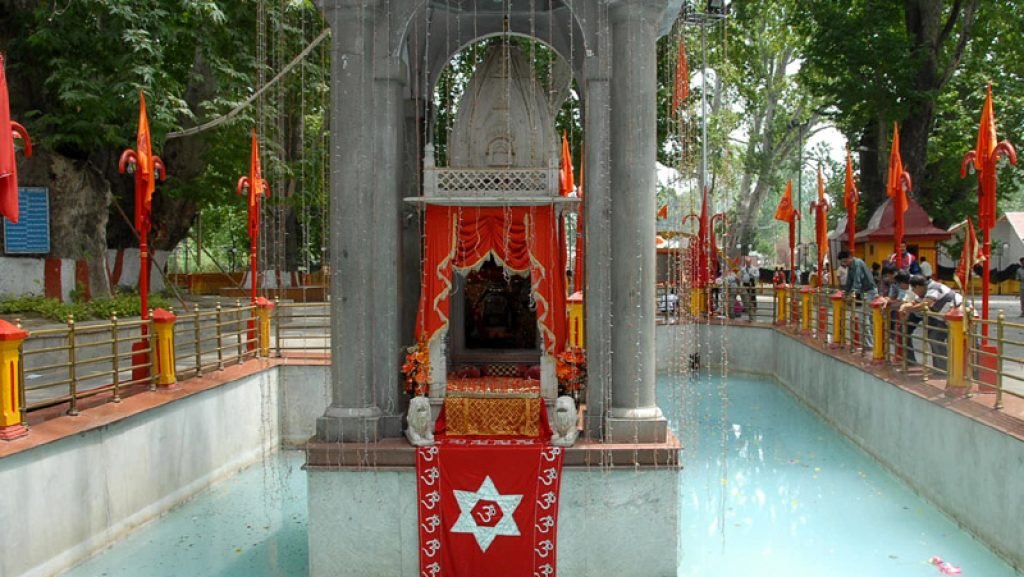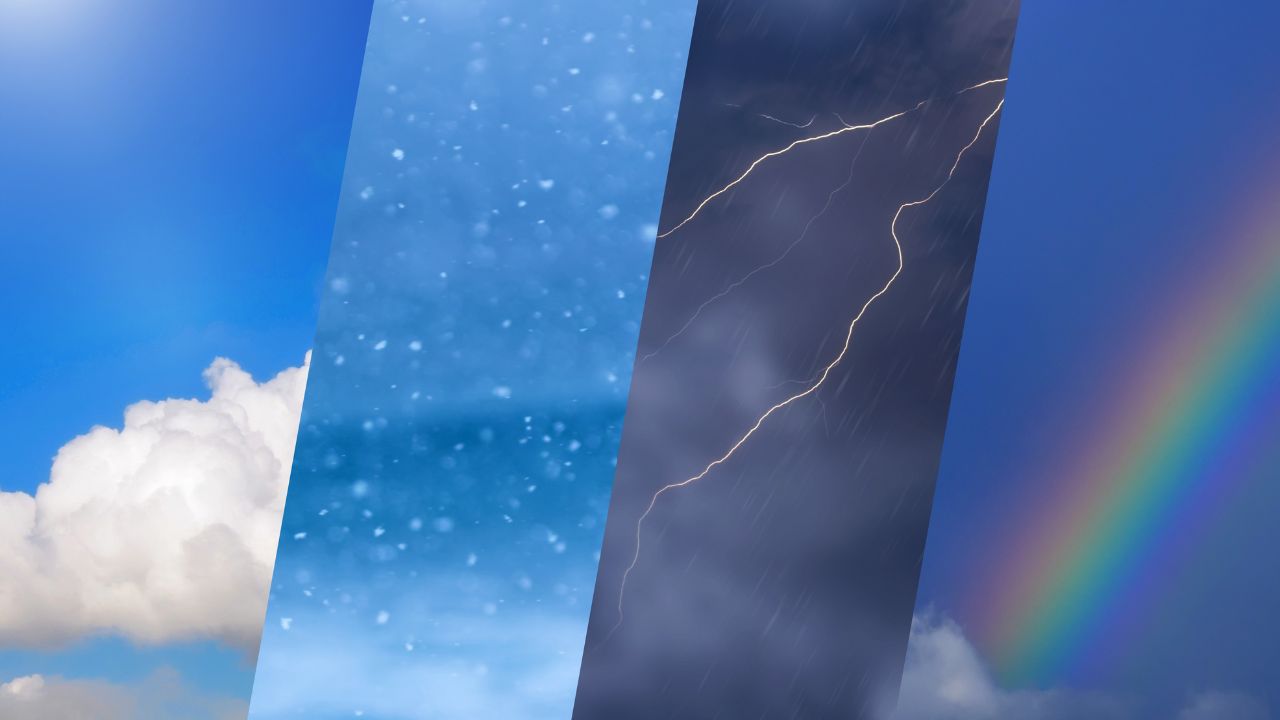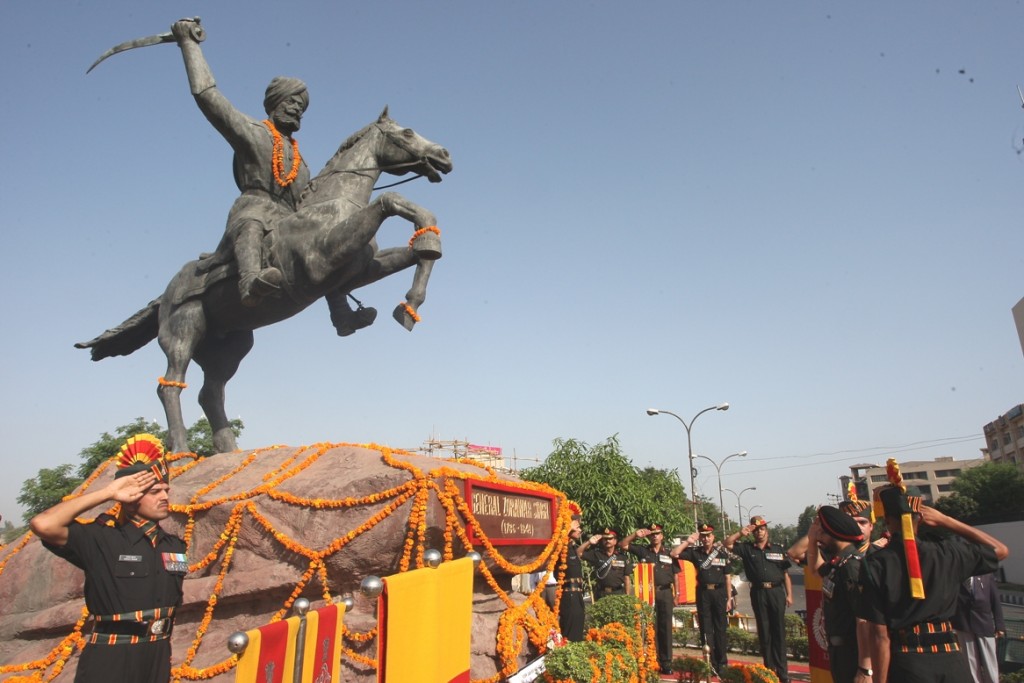Nestled in the quaint village of Tula Mula, approximately 27 kilometers from Srinagar in Jammu and Kashmir, the Kheer Bhawani Temple stands as a symbol of spiritual devotion, heritage, and Kashmiri Pandit identity. Dedicated to Goddess Ragnya Devi, this temple is renowned for its serene ambiance, mystical legends, and an annual pilgrimage that draws thousands of devotees from across India.
Significance of the Kheer Bhawani Spring
At the heart of the temple lies a sacred natural spring believed to be the earthly embodiment of the Goddess. The spring is famous for its color-changing waters, which are thought to reflect the divine moods of Mata Kheer Bhawani. Hues such as red, green, blue, and pink may appear, according to legends, a dark hue symbolizes impending danger or unrest, such as the all-black shade seen before the Kashmiri Pandit exodus in 1990.
Devotional Practices and Offerings
Milk and rice pudding (kheer) are the most revered offerings made by devotees. Pilgrims bring these items to seek blessings and show gratitude. The temple earns its name from this tradition—“Kheer Bhawani”—and devotees offer their prayers with deep faith and emotional connection, especially those who have been displaced from the Valley.
Read also : Maharani Temple in Gulmarg: A Testament to Jammu & Kashmir’s Spiritual Heritage
Historical Legacy and Architecture
The temple structure as we know it today was rebuilt during the reign of Maharaja Pratap Singh in the early 20th century and later renovated by Maharaja Hari Singh. Built with polished grey stones, the architecture is simple yet elegant, blending harmoniously with the natural surroundings. The temple complex is adorned with ancient Chinar trees, enhancing its divine charm.
Kheer Bhawani Mela: The Grand Annual Festival
Each year, on the auspicious day of Jyeshtha Ashtami (usually in June), the temple hosts the Kheer Bhawani Mela, a vibrant and sacred gathering of Kashmiri Hindus. Fasting devotees travel from near and far to participate in this spiritual congregation. The government of Jammu and Kashmir recognizes the significance of the festival, often declaring a public holiday to honor the occasion.
This event is second in religious importance only to the Amarnath Yatra and serves as a powerful reminder of the community’s enduring cultural and spiritual ties to the region.
Legends and Myths Surrounding Kheer Bhawani
Numerous ancient texts mention the temple and spring, adding to its mystical allure. According to the Kalhana’s Rajtarangini, the area was once engulfed in floods, burying the spring and temple beneath marshy terrain. The Bhrigu Samhita and Abu’l-Fazal’s Ain-i-Akbari also reference the sacred site, further solidifying its place in India’s religious history.
Another legend claims that 360 springs once surrounded the main spring, though these have since vanished due to environmental changes. The unique combination of a Shiva Linga and Goddess idol, placed inside the spring’s sanctum, makes this shrine distinct from others across India.
Cultural Importance for Kashmiri Brahmans
For the Kashmiri Pandit community, Kheer Bhawani Temple represents more than just a religious destination—it’s a spiritual home. Over the past fifty years, this pilgrimage has emerged as the most important religious event for Kashmiri Hindus. Even those living outside Jammu and Kashmir return to Tula Mula to reconnect with their roots and express their devotion.
Temple’s Role in Promoting Communal Harmony
Over time, the Kheer Bhawani Mela has evolved into a beacon of peace and unity. Locals, regardless of faith, often participate in the event, offering logistical support and extending warmth to the pilgrims. The festival showcases Kashmir’s rich legacy of communal harmony, where spirituality bridges cultural divides.
Unique Features of the Temple Complex
- Location: Northeastern region of Srinagar, Jammu & Kashmir, India
- Sacred Spring: Septagonal in shape, believed to be divine in origin
- Color Changes: Natural but symbolic—colors like black are taken seriously by devotees
- Chinar Trees: Ancient trees enhance the temple’s tranquil environment
- Marble Temple: Built over the spring, enhancing both aesthetics and spiritual sanctity
Read also: Zeashta Devi Shrine: A Sacred Jewel of Spiritual Legacy in Kashmir
Spiritual Tourism and Visitor Experience
Although primarily a religious site, Kheer Bhawani Temple attracts curious travelers and spiritual seekers. The peaceful atmosphere, historical significance, and connection to ancient Hindu scriptures make it a must-visit for anyone exploring Jammu and Kashmir. Tourism has brought greater visibility to the temple, helping preserve and share its sacred traditions with the world.
The Kheer Bhawani Temple is a timeless spiritual destination that captures the essence of Kashmiri culture, devotion, and resilience. For the Kashmiri Pandits, it remains a symbol of identity and hope. For others, it is a place to witness the fusion of faith, history, and natural beauty. Whether you’re a pilgrim or a traveler, the temple offers an unforgettable experience, drenched in divine grace and cultural richness.
















